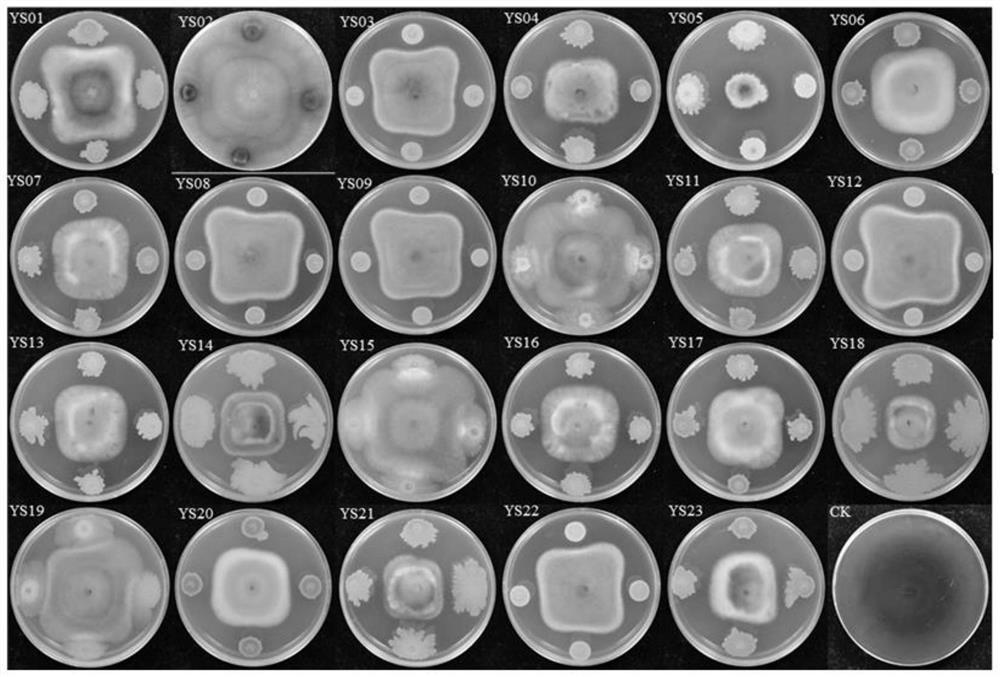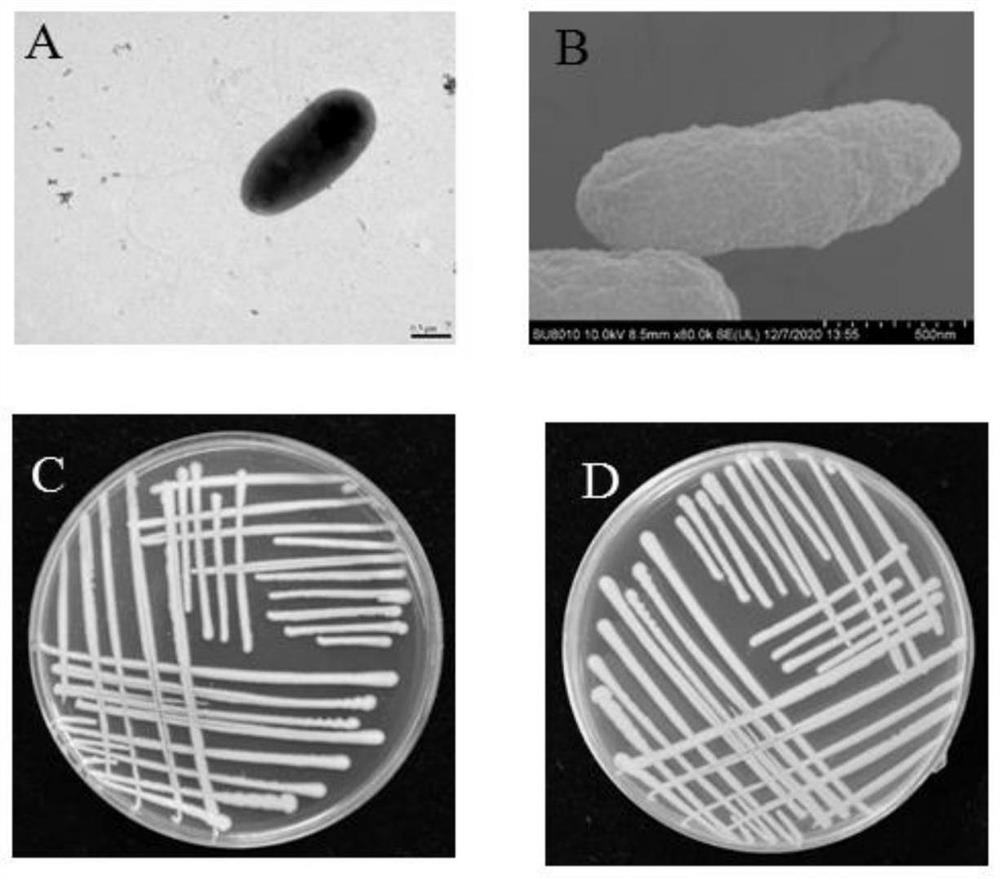Pseudomonas chlororaphis and application thereof in prevention and treatment of tomato stolonidium leaf spot
A technology for leaf spot disease of Pseudomonas aeruginosa and stolonifera, which can be used in applications, bacteria, fungicides, etc., and can solve the problems of drug-resistant pathogenic strains, environmental pollution, chemical residues, etc.
- Summary
- Abstract
- Description
- Claims
- Application Information
AI Technical Summary
Problems solved by technology
Method used
Image
Examples
Embodiment 1
[0062] Example 1, Isolation, Screening, Identification and Preservation of Bacterial Strain YS05
[0063] 1. Isolation and purification of strain YS05
[0064] The rhizosphere soil samples from the open field crops in Harbin were taken, and 10 g of each soil sample was weighed, added to 90 mL of sterilized water, and placed in a constant temperature shaker at 28 ° C for 30 min. according to 10 -1 -10 -7 For serial dilution, take a dilution gradient of 10 -5 、10 -6 、10 -7 The soil samples were plated and placed in a constant temperature incubator at 28°C for 24 hours. After a single colony grows on the coated plate, use a sterilized toothpick to pick out a single colony of different shapes and line it on the KB solid plate for purification. Place it in a constant temperature incubator at 28°C until a single colony with the same shape grows, and then place it at 4°C Store in the refrigerator for later use. Finally, a total of 236 bacterial strains were isolated from the r...
Embodiment 2
[0097] Embodiment 2, bacterial strain YS05 antibacterial spectrum determination
[0098] Nine common vegetable pathogenic fungi and three pathogenic bacteria were selected to determine the antibacterial spectrum of strain YS05.
[0099] The nine kinds of vegetable pathogenic fungi and three kinds of pathogenic bacteria are shown in Table 4, and the specific sources are as follows:
[0100] Anthracnose (Colletotrichum spp.) has been published in the document "Yu Yang, Shi Yanxia, Fu Junfan, Li Baoju. Mechanism of affinity pathogens to induce disease resistance in cucumber tissue structure. Journal of Plant Protection 2008, (01): 37-42.", the public can Obtained from the Vegetable and Flower Research Institute of the Chinese Academy of Agricultural Sciences to repeat the experiment of this application, and cannot be used for other purposes.
[0101] Botrytis cinerea has been published in the literature "Shi Yanxia, Tang Ming, Jin Zhiwen, Xie Xuewen, Chai Ali, Li Baoju. Eval...
Embodiment 3
[0117] Embodiment 3, bacterial strain YS05 biocontrol factor assay
[0118] 1. Detection of cellulase
[0119] Inoculate 5 μL OD in the center of CMC medium 600 =0.8 strain YS05 bacterial suspension, cultured at 28°C for 24 hours, added 3 mL of Congo red dye for staining for 30 minutes, poured off the dye, then added 5 mL of 1mol / L NaCl solution for decolorization for 15 minutes, and observed the digestion circle. Each treatment was repeated 3 times.
[0120] 2. Detection of protease
[0121] Inoculate 5 μL OD in the center of skim milk medium 600 =0.8 strain YS05 bacteria suspension, observe the digestion circle after culturing at 28°C for 24 hours. Each treatment was repeated 3 times.
[0122] 3. Detection of hydrocyanic acid HCN
[0123] Cut Whatman filter paper into strips of 5mm×25mm; weigh 25mg copper(Ⅱ) ethylacetoacetate and 25mg 4-4'-methylenebis-(N,N-dimethylaniline) respectively, dissolve them in 10mL chloroform, sterilize the Whatman filter The paper strips w...
PUM
| Property | Measurement | Unit |
|---|---|---|
| diameter | aaaaa | aaaaa |
Abstract
Description
Claims
Application Information
 Login to View More
Login to View More - R&D
- Intellectual Property
- Life Sciences
- Materials
- Tech Scout
- Unparalleled Data Quality
- Higher Quality Content
- 60% Fewer Hallucinations
Browse by: Latest US Patents, China's latest patents, Technical Efficacy Thesaurus, Application Domain, Technology Topic, Popular Technical Reports.
© 2025 PatSnap. All rights reserved.Legal|Privacy policy|Modern Slavery Act Transparency Statement|Sitemap|About US| Contact US: help@patsnap.com



